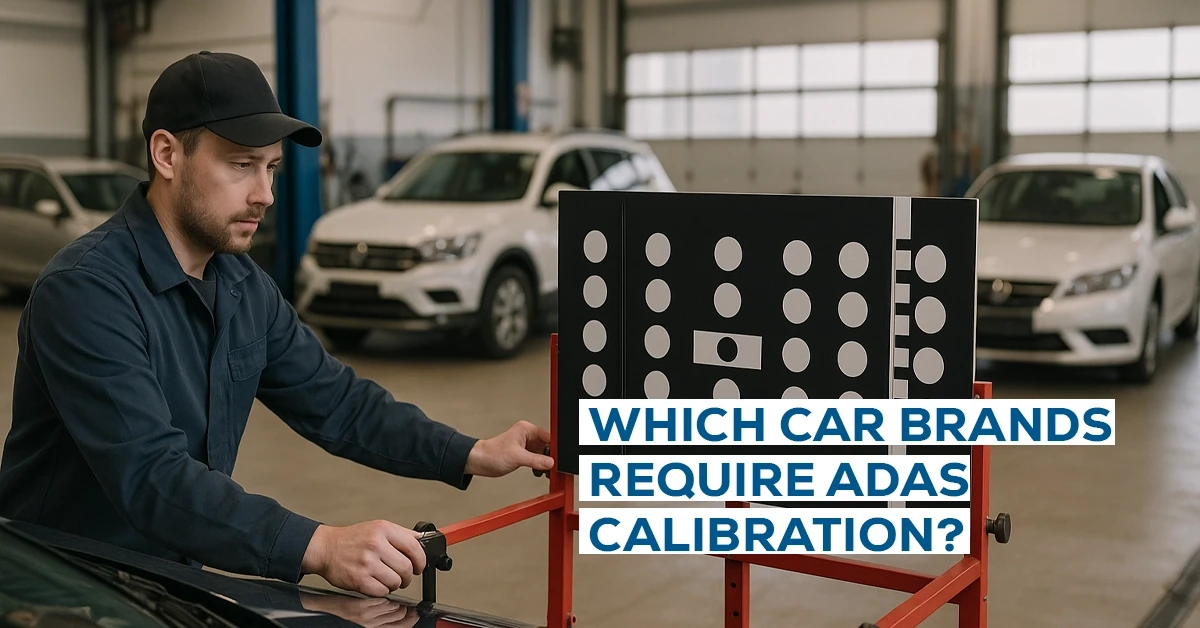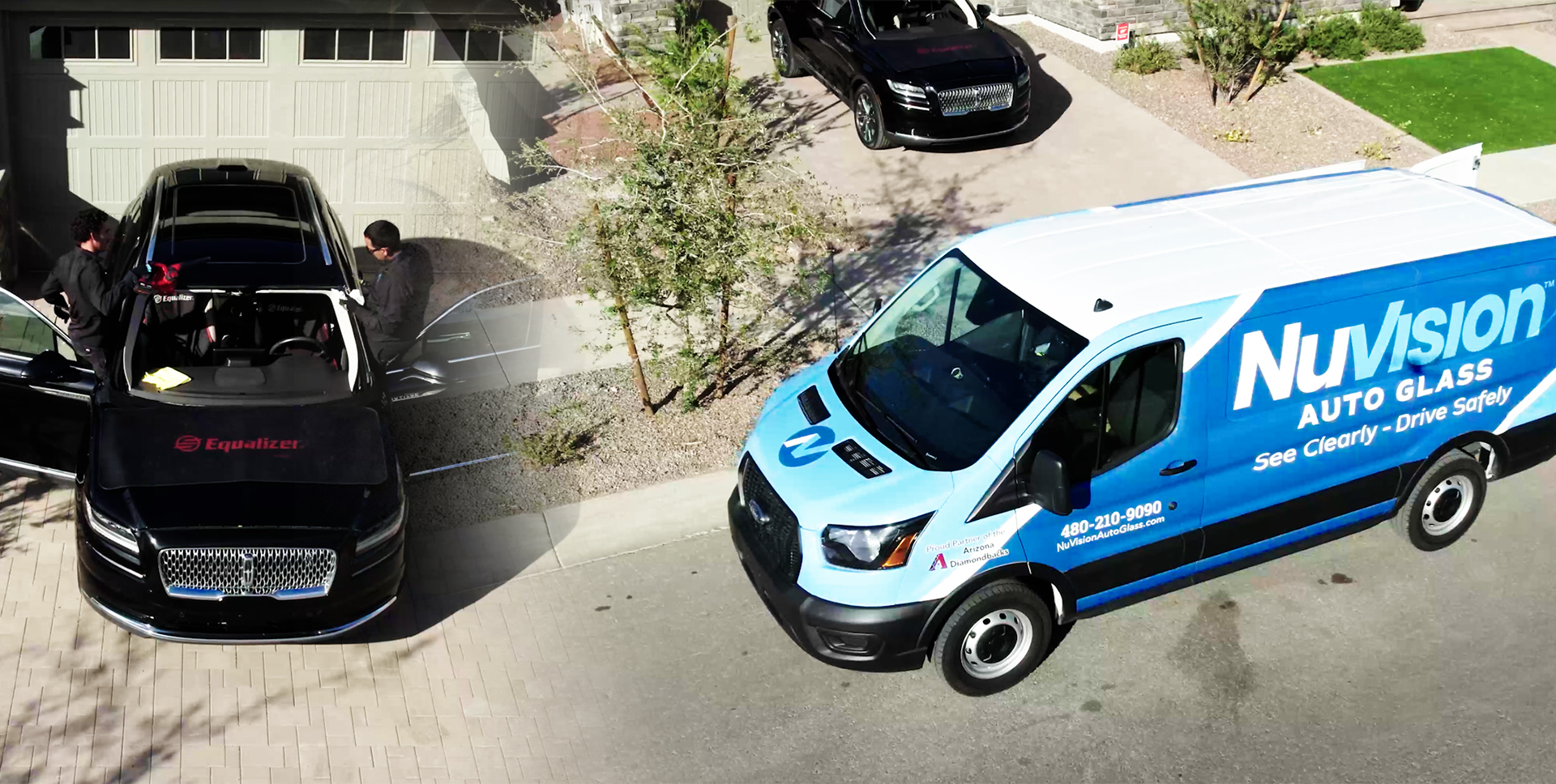Which Car Brands Require ADAS Calibration?

In today’s automotive landscape, Advanced Driver Assistance Systems (ADAS) have become standard features in most modern vehicles. These sophisticated systems use cameras, radar, and sensors to enhance safety on the road. However, what many drivers don’t realize is that these systems require precise calibration to function correctly, especially after certain repairs or maintenance. Let’s dive into which car brands require ADAS calibration and why it’s critically important.
Understanding ADAS Calibration
ADAS calibration is the process of ensuring all sensors, cameras, and radar systems are properly aligned and functioning according to manufacturer specifications. This calibration is essential for the accurate operation of safety features like:
- Automatic emergency braking
- Lane departure warning
- Adaptive cruise control
- Blind spot detection
- Forward collision warning
- Pedestrian detection
Even minor misalignments in these systems can lead to serious safety concerns, making proper calibration a necessity rather than an option.
Car Brands That Need ADAS Calibration
While almost all modern vehicles with ADAS features require calibration under certain circumstances, some brands have more extensive or sensitive systems that demand particular attention. Here’s a breakdown of major car brands and their ADAS calibration requirements:
European Brands
Mercedes-Benz
- Requires calibration after windshield replacement
- Uses both static and dynamic calibration methods
- Calibration needed after suspension work or wheel alignment
BMW
- Extensive ADAS suite requires precise calibration
- Front camera calibration mandatory after windshield replacement
- Radar sensor calibration needed after bumper removal or collision repairs
Audi
- Utilizes complex multi-camera systems requiring synchronized calibration
- Requires recalibration after minor body repairs or parts replacement
- Side-assist radar calibration needed after mirror replacement
Volkswagen
- Front camera calibration required after windshield replacement
- Radar calibration needed after front-end repairs
- Park assist sensors require calibration after bumper work
Volvo
- Known for pioneering safety systems with extensive ADAS features
- Requires complete system calibration after windshield replacement
- Specific calibration protocols for their City Safety system
Asian Brands
Toyota/Lexus
- Toyota Safety Sense package requires calibration after windshield work
- Specific procedures for millimeter-wave radar calibration
- Requires recalibration after suspension adjustments
Honda/Acura
- Honda Sensing suite needs precise calibration
- Requires calibration after windshield replacement, collision repairs
- Multi-point calibration process for various sensors
Subaru
- EyeSight system requires specialized calibration equipment
- Highly sensitive to alignment issues
- Requires recalibration after windshield replacement or front-end repairs
Nissan/Infiniti
- ProPILOT Assist system requires specific calibration protocols
- Forward-facing camera calibration needed after windshield work
- Radar calibration required after front bumper repairs
Hyundai/Kia
- SmartSense systems require calibration after component replacement
- Camera and radar calibration needed after windshield or bumper work
- Specific procedures for their Highway Driving Assist feature
American Brands
Ford/Lincoln
- Co-Pilot360 technology requires specific calibration procedures
- Camera calibration needed after windshield replacement
- Radar calibration after front-end repairs
General Motors (Chevrolet, GMC, Buick, Cadillac)
- Super Cruise system requires precise calibration
- Forward collision systems need recalibration after windshield replacement
- Specific calibration requirements for different models and years
Chrysler/Dodge/Jeep
- Requires calibration after windshield replacement
- Specific procedures for their adaptive cruise control system
- Blind spot monitoring systems need recalibration after side panel work
Importance of ADAS Calibration
The importance of proper automotive ADAS calibration cannot be overstated. Here’s why it matters:
Safety First
- Uncalibrated systems may fail to detect obstacles, pedestrians, or vehicles
- Warning systems may activate too late or not at all
- Automated braking systems might not engage when needed
Legal Compliance
- Many jurisdictions now require proper ADAS calibration after repairs
- Uncalibrated systems may violate vehicle safety regulations
- Can affect insurance coverage in the event of an accident
Optimal Vehicle Performance
- Properly calibrated systems ensure smooth operation of driving assistance features
- Prevents false alarms or unnecessary system interventions
- Maintains manufacturer-intended functionality
Cost Savings
- Prevents potential accidents that could result from malfunctioning systems
- Avoids costly secondary repairs due to system failures
- Maintains vehicle value by ensuring all safety systems function correctly
When Is ADAS Calibration Required?
Most car brands require ADAS calibration under these common circumstances:
- After windshield replacement
- Following collision repairs, especially to the front or rear of the vehicle
- After suspension work or wheel alignment
- When replacing bumpers, grilles, or body panels containing sensors
- Following mirror replacement (for systems with side-mounted cameras)
- After battery disconnection in some vehicles
- When dashboard warning lights indicate system malfunctions
- As part of regular maintenance schedules for some premium brands
Choosing the Right Service Provider
When seeking automotive ADAS calibration, NuVision AutoGlass delivers excellence through:
- Brand-specific calibration equipment for precise results
- Technicians with specialized training for all vehicle makes
- Strict adherence to manufacturer-specified calibration procedures
- Rigorous quality control processes ensuring accuracy
- Detailed documentation provided for every completed calibration
Get a quote from NuVision AutoGlass today
Conclusion
As automotive technology continues to advance, proper ADAS calibration becomes increasingly important for vehicle safety and performance. Whether you drive a Mercedes-Benz, Toyota, Ford, or any other brand with advanced driver assistance systems, understanding when and why calibration is necessary can help ensure your vehicle operates as designed.
Remember that while all modern vehicles with ADAS features require some form of calibration under specific circumstances, the exact procedures and requirements vary significantly between car brands. Always consult with qualified technicians who have the proper equipment and training for your specific vehicle make and model to ensure your safety systems function correctly.
Learn more about our adas calibration services or explore how we can help with insurance claims for your auto glass needs.
FAQs About ADAS Calibration
How do I know if my car has ADAS features that require calibration?
Most vehicles manufactured after 2018 include some form of ADAS. Check your owner’s manual or contact your dealer to confirm which systems your vehicle has and their calibration requirements.
How much does ADAS calibration typically cost?
Costs vary widely depending on the vehicle brand, model, and systems involved. Simple camera calibrations might cost $250-400, while comprehensive calibration of multiple systems can range from $500-1200.
How long does ADAS calibration take?
Simple calibrations may take 1-2 hours, while complex multi-system calibrations can require 3-5 hours or more, depending on the vehicle brand and equipment used.
Can I drive my car without ADAS calibration?
While the vehicle will operate, uncalibrated ADAS systems may not function correctly, potentially compromising safety features. Some vehicles may display warning messages or disable certain features until calibration is completed.
Will my insurance cover ADAS calibration?
Many insurance policies now cover ADAS calibration when it’s required as part of a covered repair, such as windshield replacement after damage. Check with your insurance provider for specific coverage details.

